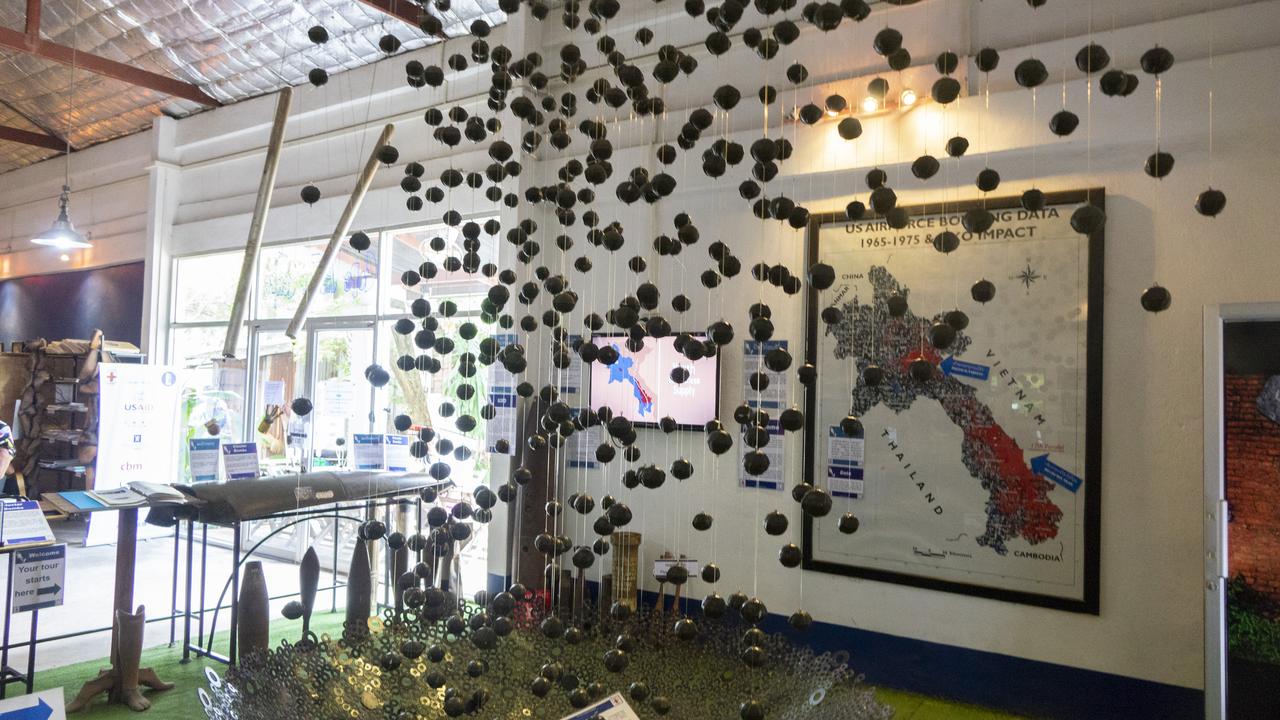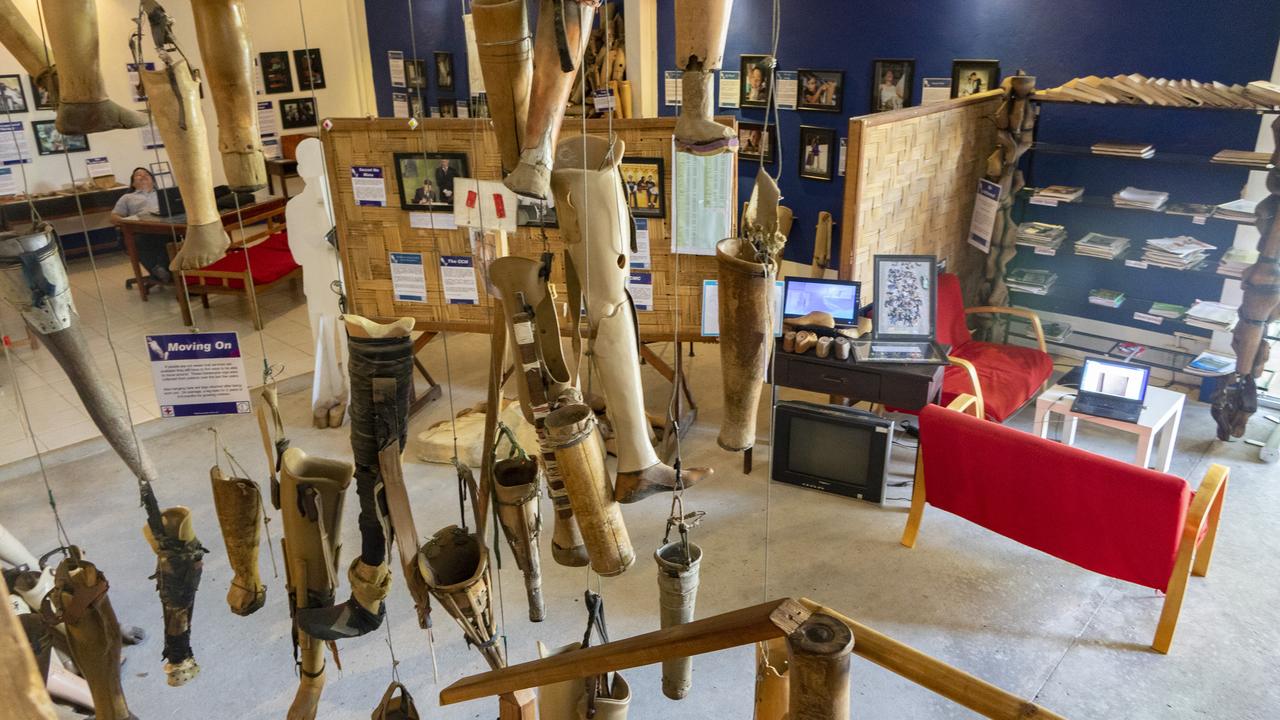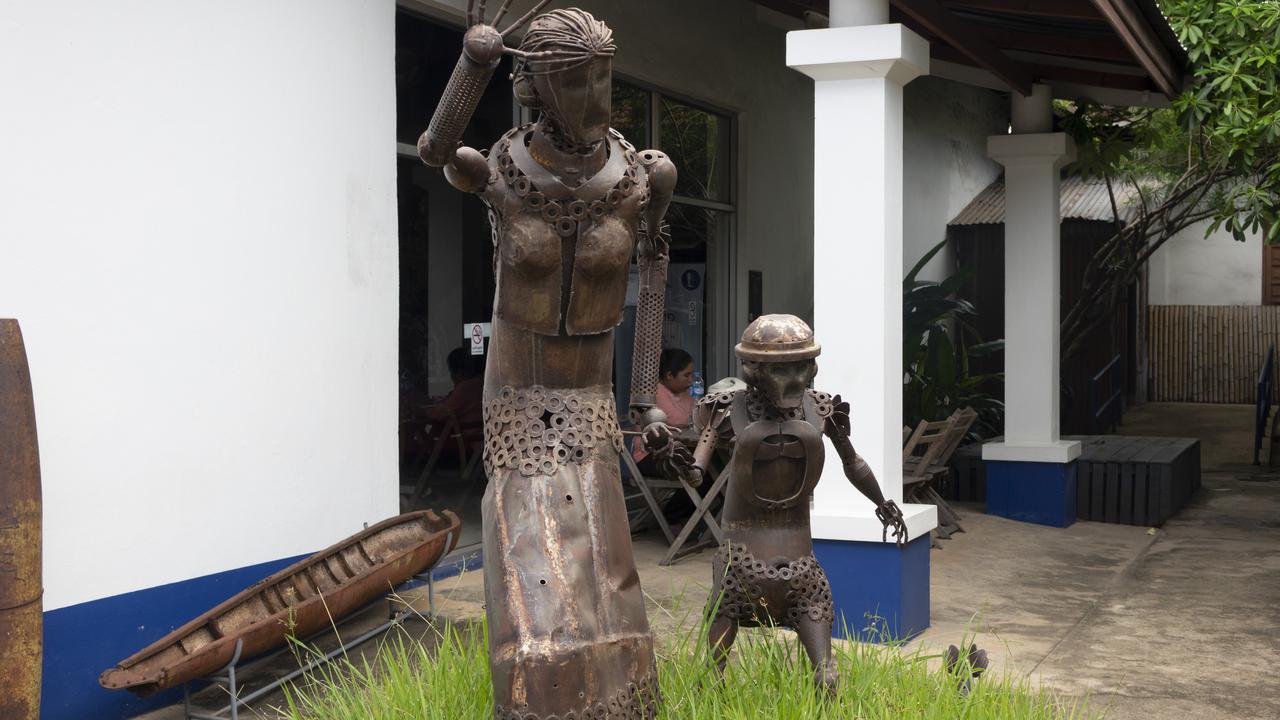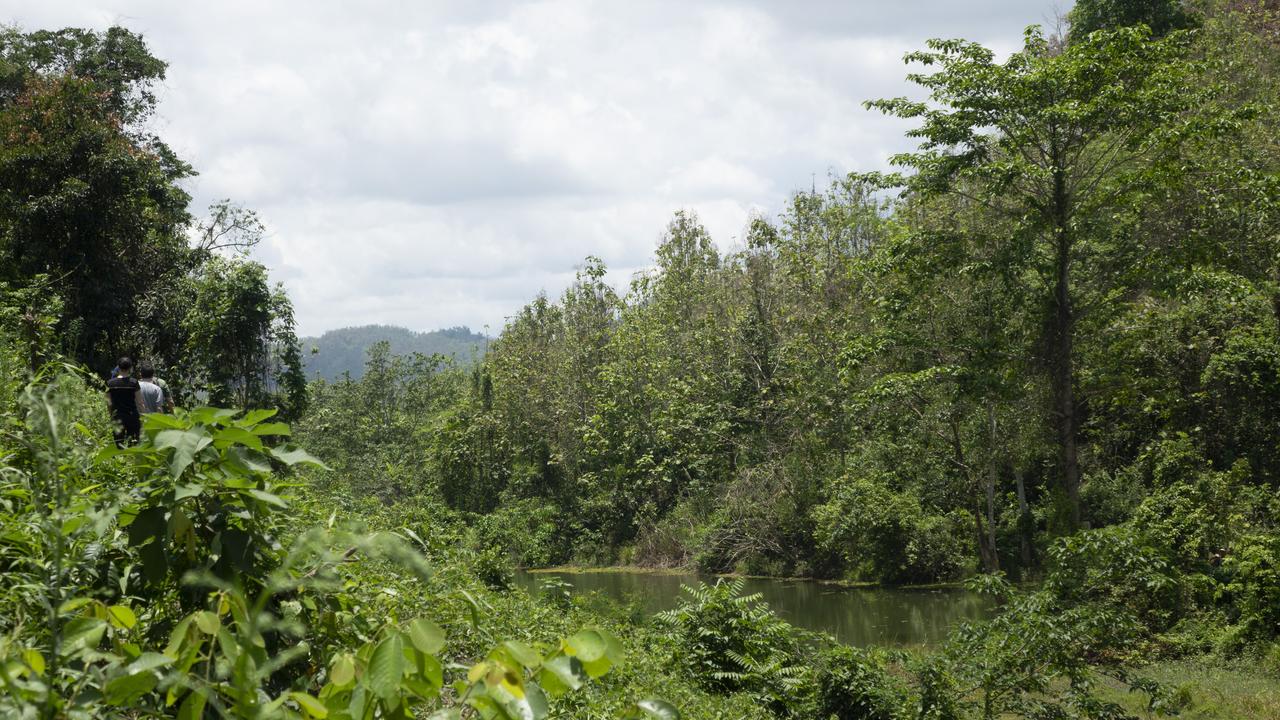Living with unexploded ordnance in Laos
by Guest author on 31st May 2018
Image gallery
It's a little too easy to view the 1960s as old news, but Laos’ citizens still live amongst unexploded ordnance (known as UXO) from the Vietnam War era. We’re taking a small group of clients to see Mines Advisory Group (MAG) in action in Laos, soon, so we wanted to learn about living with the UXO...
Phonsavan is brimming with bravado. 'Craters' bar... 'Bombies' restaurant... bomb casings hung as trophies, like a hunter might display the beast that nearly killed him. The rural communities of Laos are unlikely to run into a tiger these days, but many of them still live with the daily risk of an encounter with unexploded ordnance from a war that ended over 40 years ago.
Out-of-towners who dine at Bombies are probably in Phonsavan to see the unusual megalithic monuments which fill the 'Plain of Jars' beyond the town. The Plain was a major theatre of action during the Laotian Civil War, which was fought in parallel to the Vietnam War, by overlapping sets of enemies.
During these conflicts, the north Vietnamese army created a remarkable network of secret routes throughout Laos. It let them circumvent the front line, which divided Vietnam, to deliver reinforcements and supplies directly to comrades deep in the enemy south. Known as the Ho Chi Minh Trail, this network is acknowledged as one of the ‘greatest military engineering feats of the 20th century’ by American military experts.
In reaction to the trail and communist influence in Laos, the US air force dropped 270,000,000 'bombies' (the submunitions dispersed by cluster bombs) onto Laos between 1964 and 1973. It was the heaviest bombing campaign in history, and has been claiming casualties ever since.
About a third of the ‘bombies’ failed to detonate when deployed, and scudded to a halt in the fields and forests. Ground troops operating in the area also left behind nasty surprises such as grenades, anti-tank rockets, and landmines. Nobody came to clear up straight after the war, and the outside world quickly moved on. The bombies stayed where they’d landed, looking like tennis balls and remaining potentially lethal long after hostilities ceased.
'There were more than 580,000 bombing missions on Laos from 1964 to 1973. That's equivalent to one bombing mission every eight minutes, 24 hours a day, for nine years.' - Mines Advisory Group
Although charities and governments have been working to make the landscape safe again, the pace of UXO clearance is painfully slow - too slow to wait to get on with your life, however risky it may seem. Faced with a choice between ploughing potentially lethal fields and letting their families starve, Phonsavan's farmers choose bravado.
For an insight into daily life amongst the bombies, I turned to Mark Steadman, expert Laos guide and founder of the Lone Buffalo community school in Phonsavan, which counts MAG and UXO Laos staff amongst its English language students.
Mark: ‘UXO is a way of life here; we just get on with it. Ironically, [that’s] the only way people can survive and move on. Farmers plough fields that have not been cleared - otherwise the family goes hungry. Flying into Phonsavan over the Plain, you see the bomb craters all around. Ordnance is displayed on walls and outside restaurants. The restaurants themselves screen old scratchy footage of the conflict in the evenings, for tourists returning from the Jars. Local tours are advertised, to 'big bomb crater', 'old Russian tank', 'bomb spoon village'...
[You can hear] the regular explosions of (hopefully) clearance teams destroying old ordnance. Jeeps full of clearance teams pass through town every morning and evening. On the injury board at the UXO Survivors Centre, there are stories of accidents - ten-year-olds killed by bombs dropped probably before their grandparents were born, in some cases. It always feels surreal when I return to the west and then look at pictures or read stories about what has happened in our town. Seems like another world... One fact I know is that UXO Lao [a Laos government organisation which runs a parallel clearance program] can only clear 10% of requests per year. So the other 90% [rolls over into] the next year…
The good news is, despite the picture I paint above, generally life is safe. The cluster bombs are in places we don't go to [with tourists], although not necessarily far from town. The three main Jars sites that attract visitors to the town have been surface-cleared by MAG, and fully cleared walkways have been put in between markers. So it’s not something I worry about.’
According to MAG, most incidents are caused by impact, such as hitting buried ordnance whilst digging, or lighting fires over hidden UXO. Moving items also carries a risk, and in some instances UXO has been broken down in order to sell the scrap metal (or the explosives inside) so it’s not a case of people not knowing what they’re doing, so much as an effect of poverty. Which is cyclic - 41 of the 45 poorest districts in Laos are those most affected by UXO contamination. Despite their resilience, painful experience means farmers are reluctant to expand their fields, which means many rural communities are unable to grow enough food. Basic infrastructure - irrigation to improve crop yield, roads to distribute surplus - is impossible to build safely until the ordnance is cleared.
In Laos, MAG has already (as of May 2018) removed 211,000 items of UXO, targeting the land that will give most benefit to communities (they simply lack the resources to do it all). The work is a painstaking process, and progress is measured in metres rather than miles. While the locals wait for more land to be released, MAG partners with other organisations to help communities use cleared land as productively as possible. The charity gives risk education sessions to help communities live safely with UXO while they wait, and prefers to employ local staff, who are trained and supervised by MAG’s technical experts. The ultimate goal is an organisation of locals with the skills to safely deal with UXO in their own communities.
Visitors are encouraged to get their heads around the situation, too. Mark says, ‘My ethos as a tour guide is to show my clients real life, however grim it may be. I do detailed talks about the history of the conflict here, and also the aftermath and current issues, so everyone understands exactly what happened here. It puts the whole of Laos in perspective.’



